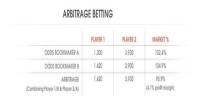This article talks about Solidarity Lending, which is a hallmark of microfinance, developed in response to an economically poor target market that needed business loans but lacked the necessary material collateral to obtain one. It lowers the costs to a financial institution related to assessing, managing and collecting loans, and can eliminate the need for collateral. Solidarity lending levers various types of social capital like peer pressure, mutual support and a healthy culture of repayment. These characteristics make solidarity lending more useful in rural villages than in urban centres where mobility is greater and social capital is weaker.
Solidarity Lending
















